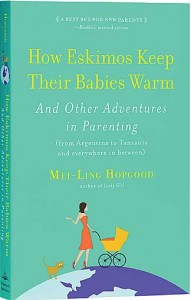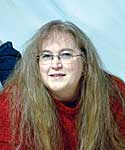
That’s all you figured it would take to do the few errands you had, maybe less. So you packed the car accordingly: car seat, stroller, diaper bag with extra nappies, a change of clothes, burp cloths, bottles, pacifiers, box of wipes, two toys, tissues, an extra blanket… oh, and the baby, to whom all this belongs.
Packing the car took almost as long as the errand.
What if you didn’t have all these things available? How do other mothers do it? In the new book “How Eskimos Keep Their Babies Warm” by Mei-Ling Hopgood, you’ll be delighted to find out.
Mei-Ling Hopgood, an Asian-American living abroad, noticed early-on that children seem to be everywhere in Argentina – even well after midnight. The hands on the clock didn’t matter; family-time was what was important and children never missed the fun. Sleepy babies might nap in restaurants, on a host’s bed, or in the midst of chaos, and they were always a welcome part of the party.
This revelation – and the fact that she was a new mother – led Hopgood to wonder about parenting in other cultures. Is it necessary to put your baby “on a schedule?” How do other cultures deal with picky eaters or sibling arguments? And how do Eskimos keep their infants from becoming babysicles? 
Hopgood became a mom on a mission.
In rural Kenya, she learned, mothers tote children on their backs because rough paths make strollers worthless. Even throughout the toddler years, children are carried, which may actually help their physical development.
French babies are fed “grown-up” food from a very young age, and enjoyment of a wide variety of tastes is part of the culture. Hopgood learned, though, that early exposure is key to avoiding pickiness at meals.
The Balinese almost never leave their children alone for even five minutes, while the Chinese often leave theirs for family members to raise. Japanese parents allow children to teach one another basic manners, while Polynesian children are largely raised by older siblings and peers.
And Inuit babies? They spend their infancies in special fur coats with pouches, warmed against the bare backs of their mothers.
So you’ve read your childcare book cover-to-cover already – twice – and you’re still getting conflicting advice on what’s best for baby. Now it’s time for a different kind of childcare book; one that will prove to you that there are several “right” ways to be a new mom or dad.
“How Eskimos Keep Their Babies Warm” is a heartwarming book, light but informative, and filled with advice. Author Mei-Ling Hopgood doesn’t write just for parents, though; the information she unswaddled is endlessly fascinating, which makes this a great book for friends without kids, and for anyone with a curious mind.
For parents and grandparents, though, this book is as irresistible as a newborn and as hard to let go. If you’ve got room in the diaper bag or if you can lose a couple hours reading, “How Eskimos Keep Their Babies Warm” is a book to pack.
The Bookworm is Terri Schlichenmeyer. Terri has been reading since she was 3 years old and she never goes anywhere without a book. She lives on a hill in Wisconsin with two dogs and 12,000 books.
